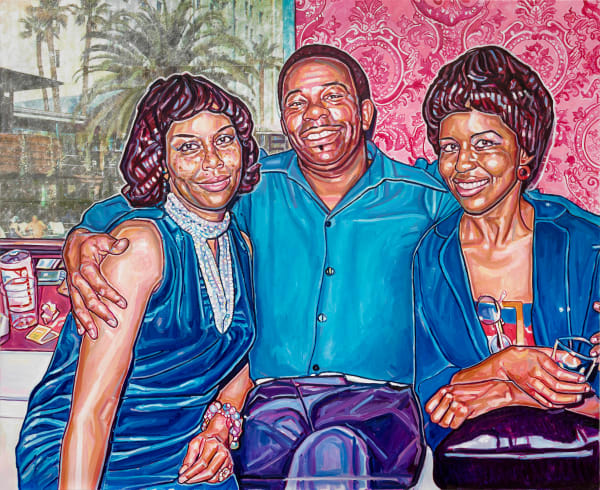Mother Tongue: Esiri Erheriene-Essi
they ask me to remember
but they want me to remember
their memories
and i keep on remembering
mine.
⁃ Lucille Clifton, “why some people be mad at me sometimes,” The Collected Poems of Lucille Clifton: 1965-2010
The paintings in Mother Tongue connect the "small ways" that memory can live on — photographs, incomplete stories, scraps of memories — which carry the essence of ancestral history more tangibly. This series is a celebration of the legacy of Black culture and the Black diaspora.
-
 Image Credit: Gert Jan van Rooij
Image Credit: Gert Jan van Rooij -
 Image Credit: Gert Jan van Rooij
Image Credit: Gert Jan van Rooij -
 Image Credit: Gert Jan van Rooij
Image Credit: Gert Jan van Rooij -
 Image Credit: Gert Jan van Rooij
Image Credit: Gert Jan van Rooij -
 Image Credit: Gert Jan van Rooij
Image Credit: Gert Jan van Rooij -
 Image Credit: Gert Jan van Rooij
Image Credit: Gert Jan van Rooij -
 Esiri Erheriene-Essi, The Memory Keepers, 2023
Esiri Erheriene-Essi, The Memory Keepers, 2023 -
 Image Credit: Gert Jan van Rooij
Image Credit: Gert Jan van Rooij -
 Image Credit: Gert Jan van Rooij
Image Credit: Gert Jan van Rooij -
 Image Credit: Gert Jan van Rooij
Image Credit: Gert Jan van Rooij












